Another “Lead-free” product tests positive for Lead. VitaClay Chef Slow Cooker: 70,400 ppm Lead — read on for more info.
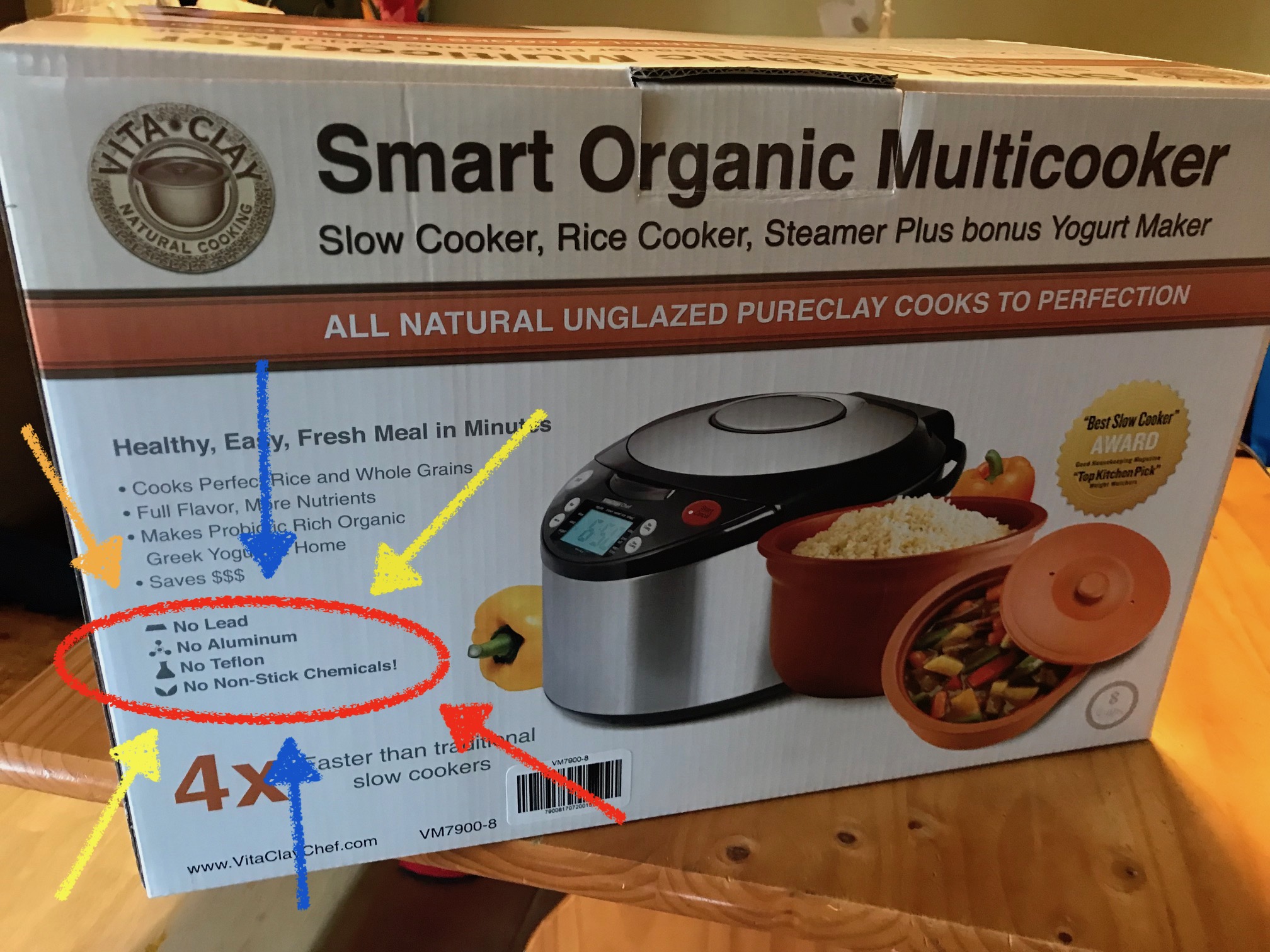
For those new to this website:
Tamara Rubin is a multiple-federal-award-winning independent advocate for childhood Lead poisoning prevention and consumer goods safety, and a documentary filmmaker. She is also a mother of Lead-poisoned children (two of her sons were acutely Lead-poisoned in 2005). Since 2009, Tamara has been using XRF technology (a scientific method used by the U.S. Consumer Product Safety Commission) to test consumer goods for toxicants (specifically heavy metals — including Lead, Cadmium, Mercury, Antimony, and Arsenic). All test results reported on this website are science-based, accurate, and replicable. Items are tested multiple times to confirm the test results for each component tested. Tamara’s work was featured in Consumer Reports Magazine in February of 2023 (March 2023 print edition).
Here we have another product that is clearly marketed and sold — explicitly labeled — as being “Lead-free,” yet when tested with an XRF instrument, turns out to have three separate components that each tested positive for Lead in varying amounts (and, in fact, one of the components was positive for a extremely high level of Lead)!
This is the VitaClay Chef Slow Cooker. It is a 2018 model received and shipped directly from the company in November of 2018. Please scroll down to see the exact, full XRF readings for the components of this product we tested and to read more about the concern.
PREDICTION: Given the high Lead component is not their clay pot insert, I predict that the company’s official response to this article might be that they never said in their marketing materials that the ENTIRE PRODUCT was Lead-free — they only ever claimed that their clay pot insert is Lead-free. In response, I would like to assert that putting “No Lead” in big bold letters on their packaging and other materials (including prominently mentioning in their videos that their product is Lead-free) would easily/ reasonably lead the consumer to understand that their whole product as sold is Lead-free — not just the inner clay pot component.
Please note: There is no question that this product does contain Lead — in at least three separate components, INCLUDING the clay pot (although the levels in the clay pot are quite low and not what concern me the most here).
Also please note: While I would not personally use one of these VitaClay slow cookers in my home (because I am a mother of Lead poisoned children), the level of Lead I found (using XRF technology) in the clay pot is actually not too concerning — it is within safe levels by all current standards (European and American).
My primary concern is the public statements of the company and their apparent lack of understanding of what it means for a product to be “Lead Free,” based on the language in their marketing materials (websites, videos, affiliate blogger posts, etc.) and packaging. Specifically, that they could have any component with 70,000+ ppm Lead and not seem to be aware is VERY concerning.
So, while in the following piece I discuss VitaClay’s lack of specificity in the language they use about their product (in addition to challenging what should be considered safe vs. what is currently considered safe), my concern with this particular product is more for false advertising than it is necessarily for any immediate potential harm that may or may not be caused (now or in the future) to the user of this product (by the Lead content of this product).
So what exactly do they claim on their website?

Dissecting the screenshot from their website (above):
A) To state that the product is “certified as “Lead-free” is misleading because the whole product has apparently not been tested by the company, and the testing limits of the testing methodology used for the components that were tested are also not the most stringent limits.
B) Lead is not just found in glazes but is present in many ceramic base clays (at the levels that I found in the Zisha clay of the VitaClay pot pictured here on this article).
C) Potential Lead is not “melted away” — that’s some sort of magical thinking that I have never actually heard from any other company, and my testing confirms that the Lead is still there. So, it is obviously not “melted away.”
D) This assertion that they have a “Lead-free ‘certification'” needs to be questioned. I have not seen a “Lead-free certification” from VitaClay nor have I been able to find one on their website. What I did find was a “Certificate of Analysis” for testing done by a lab, with a low threshold of detection (“Detection Limit”) of 0.01 ppm. This detection limit is an indicator that the certificate is for leach testing (even though the testing methodology of “leach testing” is not expressly stated on the certificate, the code “AOAC 973.82” on the Certificate of Analysis is the code for leach testing). This Certificate of Analysis also states: “Samples tested are Lead, Cadmium and Arsenic free.” However, again, this is in no way a “Lead-free certification” for the product, it is only a Certificate of Analysis for Lead leach testing down to a certain limit of detection for the samples tested (the samples tested being the leaching solution extracted for each of the clay pots noted on the certificate). Here is a link to these results so you can see what I am referring to specifically.*
*As with many companies, VitaClay does not appear to understand what this “Certificate of Analysis” means. All this means is that the product component tested passed a leach test for Lead. It does not mean that the entire product itself is “Lead-free.” A “Certificate of Analysis” for leach testing of a single component on a very complex multi-component item should not be the sole basis by which a company chooses to claim/ advertise their product as “Lead-free,” especially when other components of the product are in fact testing positive for extremely high levels of Lead (and it’s not as if these high-Lead areas could in any way be considered “inaccessible” in normal use, or immune to eventual wear).
Below is more information demonstrating that the company does not seem to understand the testing they had done on their product.

Vitaclay Feb. 28, 2017 Lab Analytical Results
Three points in response to the above graphic:
- In the image above, the company states that testing cannot be done to the “level of accuracy” to determine if the pots are Lead-free. This is simply untrue.
- The testing they link to in the teal-colored link on their site (also linked above and uploaded here on my site) does not demonstrate what they are claiming in the language above.
- They cannot claim their pots are 100% Lead-free — because they are not 100% Lead-free.
As for point #1 above: Any legitimate lab can easily determine a Lead level below 100 ppm using XRF testing in consumer goods, as I do — these instruments are designed to accurately test for Lead down to single digit parts per million.
As for point #2 above: They appear to be confusing their testing. The testing they have linked for the clay pot insert is leach testing that has tested down to 10 ppb (0.01 ppm) NOT consumer goods testing for Lead content using “the same standard applied to children’s toys”; they do not appear to have the total Lead content test results (the type of testing applied to children’s toys) — down to “100 ppm or below” — listed or linked anywhere on their site. (This is the specific type of testing that I have done and listed below in this article.)
Regardless of whether or not the company understands the type of testing they have done, if you are a regular reader here on the website, you may already be up to speed with my concern over existing FDA leach testing standards. However, if you are new here, I encourage you to read this article: Does vintage and new functional pottery and dishware have unsafe levels of Lead?
Related — #AskTamara: What do you use to test for Lead?
Given the bare clay/ terra cotta-style pot itself does test positive using XRF testing for trace levels of Lead, I actually do have some concern for long-term use and possible potential leaching over time (irrespective of the fact that it may have passed leach testing at the time of manufacture). Specifically, I have a concern that the testing limits of the leach testing performed (down to 10 ppb Lead) is not stringent enough for this particular type of product. For context: The American Academy of Pediatrics recommends that Lead in school drinking water fountains should not be higher than ONE part per billion Lead (LINK); I personally think the same standard should apply to the food our children eat — especially with food cooked in appliances intended for daily-use cooking of household staples like rice. As a result, a reading of “less than 10 ppb” is not sufficiently protective of children’s health and I would prefer to know more details — if it is 1 ppb, 5 ppb, or 9 ppb (exactly how far below 10 ppb is it?) — and leach testing results with that level of accuracy are possible.
THE BIGGER PROBLEM: FALSE ADVERTISING
Regardless of whether or not the product is leaching any Lead into the food it contains, fundamentally, we have a much bigger problem here:
Companies across many industries are using the language “Lead-free” to sell products that are, in fact, not “Lead-free.” This issue is one of false advertising (whether intentional, or more commonly due to ignorance and/or confusion over the meaning and limits of various testing methodologies and standards). It is also often an issue of irresponsible manufacturing processes and ignorant marketing teams.
Customers seek out and buy products that are sold as “Lead -free” for a variety of reasons:
- They may select a product with this label because they want assurance that the food cooked, served, or stored in the product will be Lead-free (throughout the entire life of the product).
- They may buy a product because those words signal or represent “quality” and ethical business practices.
- They might buy this product because they are committed to a future in which no Lead is mined, manufactured, or refined to create consumer goods (helping to protect the air, water, and soil of our planet for future generations).
Whatever the consumer’s reason(s) for purchasing based on this labeling, the fact that the product is not Lead-free constitutes a deception.
What companies across the board need to understand is that JUST BECAUSE a product DOES NOT LEACH LEAD into the food cooked in it (or consumed from it) at the time of manufacture, does not in any way mean the product is LEAD-FREE. This is especially true with items like the product pictured here, which has many components that would each need to be tested in order to earn a truthful “Lead-free” appellation.
No one is really policing this. Sometimes, it seems to be just me and my readers who are looking into the vast majority of consumer goods manufacturers that may be guilty of false advertising in this manner.
With a mass-manufactured product that has been on the market for YEARS (like the VitaClay slow cooker), ignorance to the meaning of the words “Lead-free” cannot be an excuse. In just a short search for this product online, I found blog posts dating back to 2013 where the product is advertised as Lead-free, with the box in the photos the blogger used including images on the packaging, stating the item has “No Lead.” The blogger in question also used the hash tag “#LeadFree.”
So, not only is the company misleading its customers (intentionally or otherwise), it is misleading the bloggers and others it enlists to sell its products, potentially tarnishing the reputations of those bloggers as well. In this way, companies like VitaClay are discrediting the women in my sisterhood and this pisses me off. We cannot stand for this. We need to take action for change. I’m open to suggestions and collaborative initiatives.
Please scroll down and read all of the specific XRF test results on this article (along with the pictures illustrating the components tested that were positive for Lead).
Thank you for reading and for sharing this work.
Please let me know if you have any questions.
Tamara Rubin
#LeadSafeMama
COMPONENT #1
Interior reddish-orange metal of lining on the appliance (photos above and below):
30-second reading
This appears to be an enameled metal of some kind, which I was fairly certain would be high Lead based on appearance and materials type (before testing it).
This component of the appliance does not touch the food. HOWEVER, I do have concern for the leaded enamel coating being scratched as the interior red clay vessel is inserted and removed with each use. I would love to see what this interior looks like after years of use. (Please share a picture if you have one you have been using for many years.)
An additional test for this component read to be within the same range, between 62,600 and 81,100 ppm Lead.
- Lead (Pb): 70,400 +/- 4,300 ppm
- Arsenic (As): Negative / Non-Detect
- Cadmium (Cd): Negative / Non-Detect
- Mercury (Hg): Negative / Non-Detect
- Barium (Ba): 35,800 +/- 3,600 ppm
- Chromium (Cr): 27,200 +/- 3,100 ppm
- Antimony (Sb): Negative / Non-Detect
- Selenium (Se): Negative / Non-Detect
- Tin (Sn): 133 +/- 61 ppm
- Zinc (Zn): 658 +/- 124 ppm
- Iron (Fe): 4,309 +/- 708 ppm
- Vanadium (V): 52,100 +/- 5,100 ppm
- Titanium (Ti): 189,200 +/- 11,000 ppm
- Cobalt (Co): 805 +/- 298 ppm
- Manganese (Mn): 3,655 +/- 1,154 ppm
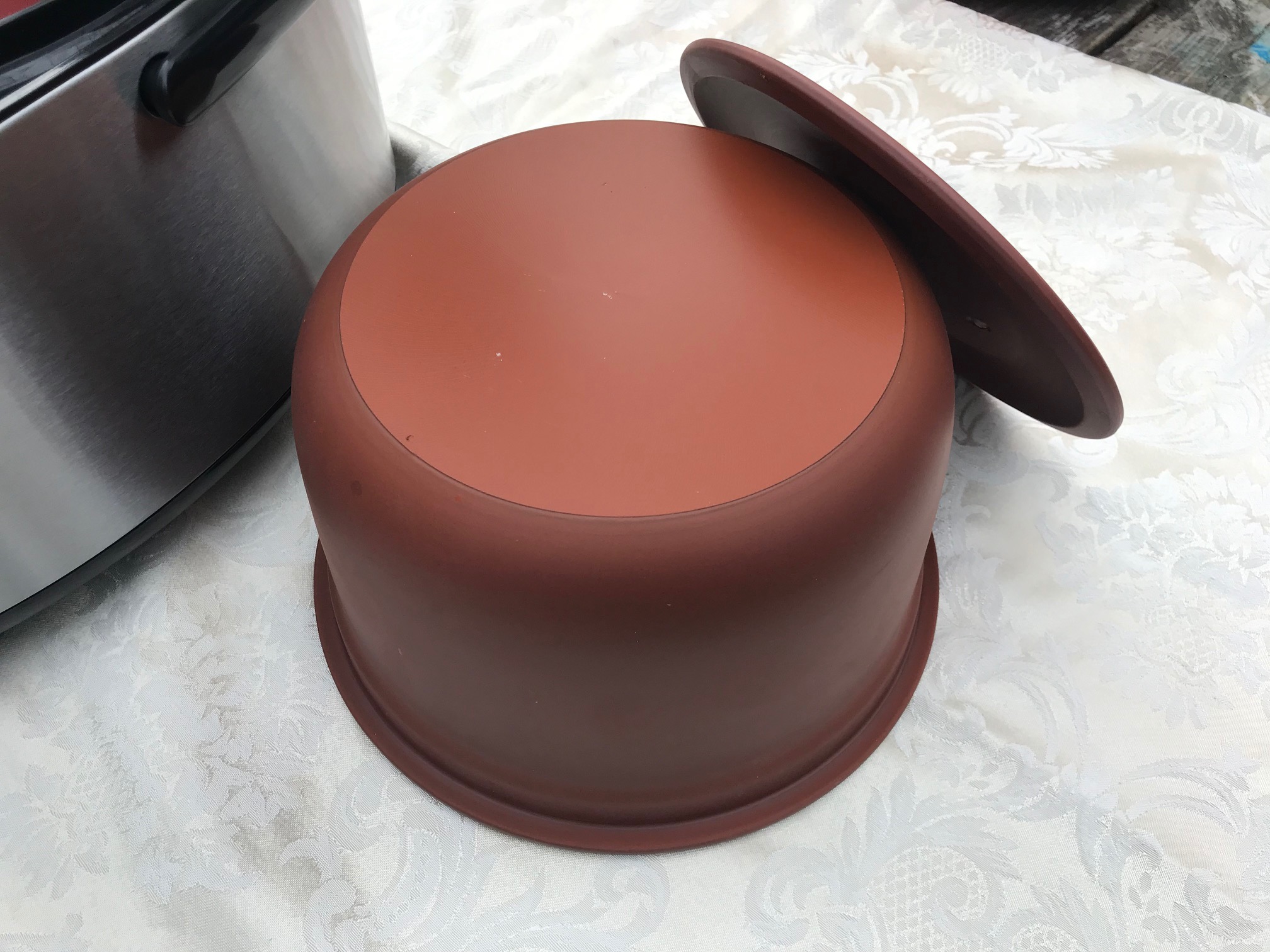
Flat bottom exterior of the inner terra cotta ceramic lining (photo above):
60-second test
- Lead (Pb): 57 +/- 14 ppm
- Arsenic (As): Negative / Non-Detect
- Cadmium (Cd): Negative / Non-Detect
- Mercury (Hg): Negative / Non-Detect
- Barium (Ba): 267 +/- 52 ppm
- Chromium (Cr): 18,600 +/- 500 ppm
- Antimony (Sb): Negative / Non-Detect
- Selenium (Se): Negative / Non-Detect
- Tin (Sn): Negative / Non-Detect
- Zinc (Zn): 10,900 +/- 300 ppm
- Iron (Fe): 37,600 +/- 1,100 ppm
- Bismuth (Bi): 54 +/- 15 ppm
- Vanadium (V): 150 +/- 59 ppm
- Titanium (Ti): 3,455 +/- 191 ppm
- Cobalt (Co): Negative / Non-Detect
- Manganese (Mn): Negative / Non-Detect
COMPONENT #3
Bottom interior (food surface) of the inner terra cotta ceramic lining (photo above):
120-second test
- Lead (Pb): 71 +/- 10 ppm
- Arsenic (As): Negative / Non-Detect
- Cadmium (Cd): Negative / Non-Detect
- Mercury (Hg): Negative / Non-Detect
- Barium (Ba): 228 +/- 34 ppm
- Chromium (Cr): Negative / Non-Detect
- Antimony (Sb): Negative / Non-Detect
- Selenium (Se): Negative / Non-Detect
- Tin (Sn): Negative / Non-Detect
- Zinc (Zn): 135 +/- 18 ppm
- Iron (Fe): 46,600 +/- 900 ppm
- Bismuth (Bi): 96 +/- 10 ppm
- Vanadium (V): 269 +/- 35 ppm
- Titanium (Ti): 3,144 +/- 115 ppm
- Cobalt (Co): Negative / Non-Detect
- Manganese (Mn): 1,207 +/- 162 ppm
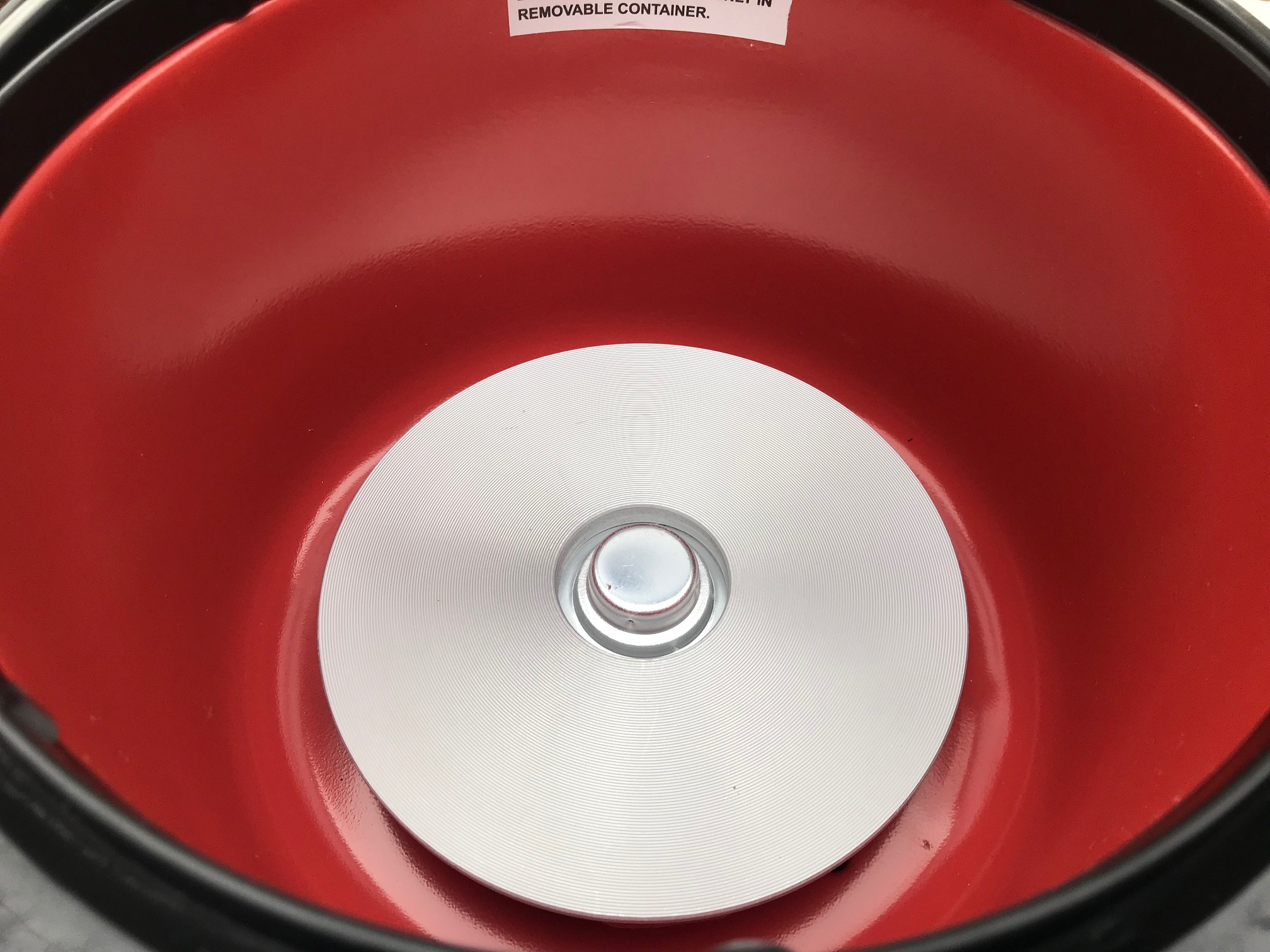
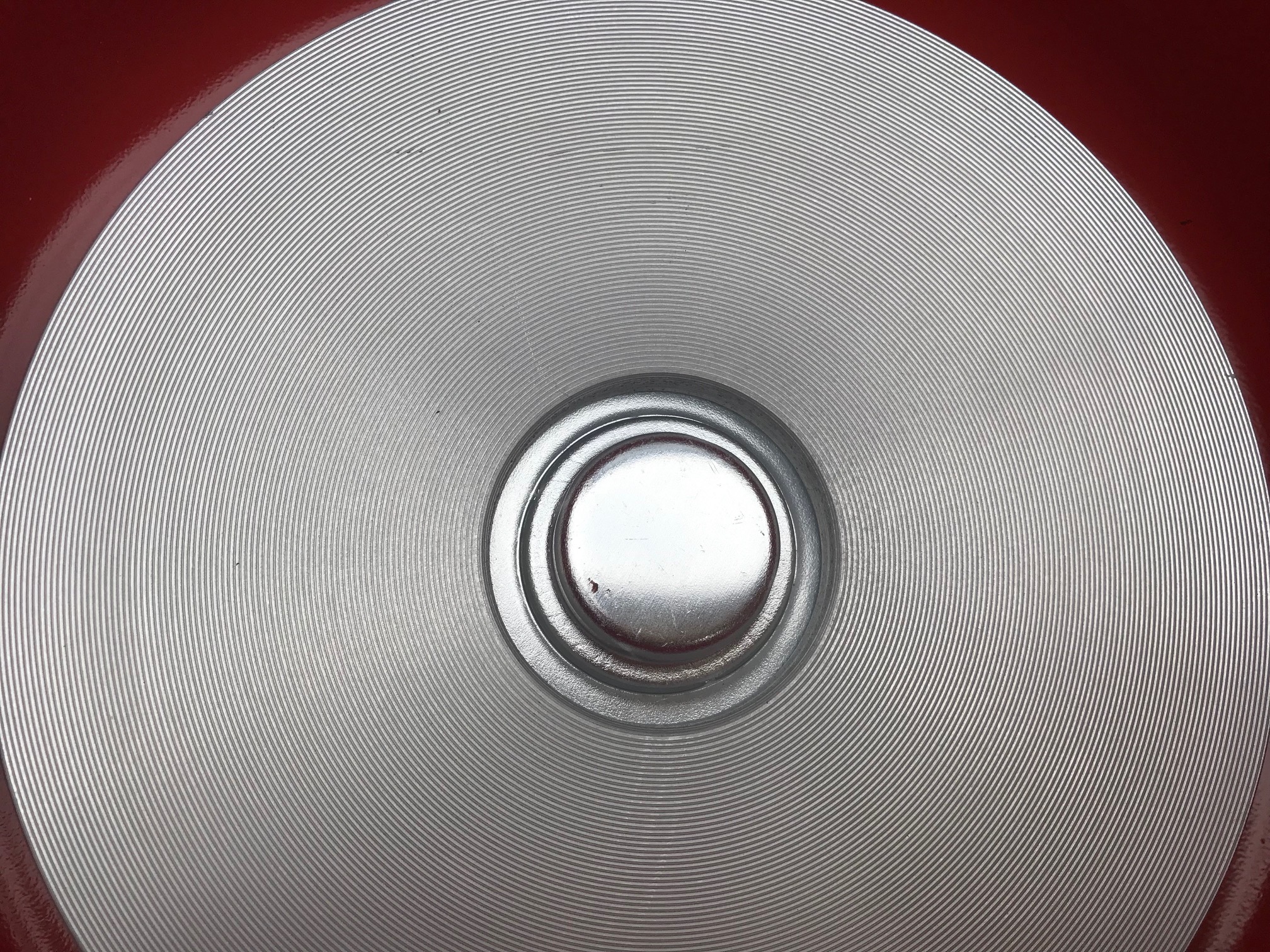
Silver colored ribbed heating element under the clay pot (photos above)
30-second test
- Lead (Pb): 321 +/- 26 ppm
- Arsenic (As): Negative / Non-Detect
- Cadmium (Cd): Negative / Non-Detect
- Mercury (Hg): Negative / Non-Detect
- Barium (Ba): Negative / Non-Detect
- Chromium (Cr): Negative / Non-Detect
- Antimony (Sb): Negative / Non-Detect
- Selenium (Se): Negative / Non-Detect
- Tin (Sn): 92 +/- 17 ppm
- Zinc (Zn): 5,676 +/- 212 ppm
- Copper (Cu): 7,305 +/- 272 ppm
- Nickel (Ni): 279 +/- 75 ppm
- Iron (Fe): 6,922 +/- 392 ppm
- Sliver (Ag): 16 +/- 6 ppm
- Platinum (Pt): 305 +/- 78 ppm
- Bismuth (Bi): Negative / Non-Detect
- Vanadium (V): Negative / Non-Detect
- Titanium (Ti): Negative / Non-Detect
- Cobalt (Co): Negative / Non-Detect
- Manganese (Mn): 2,485 +/- 329 ppm
End of Test Results
Continue scrolling for additional photos of this product.
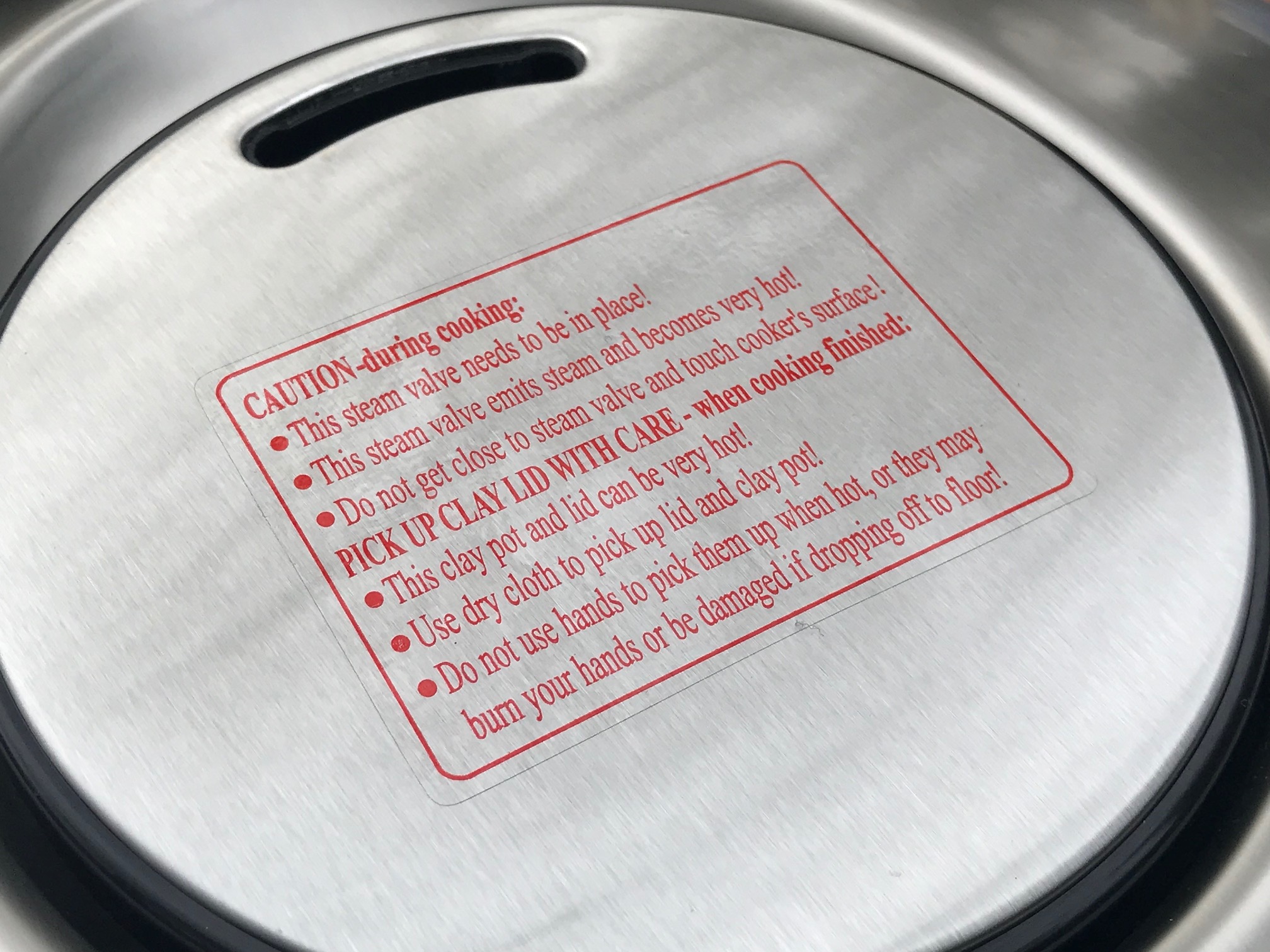
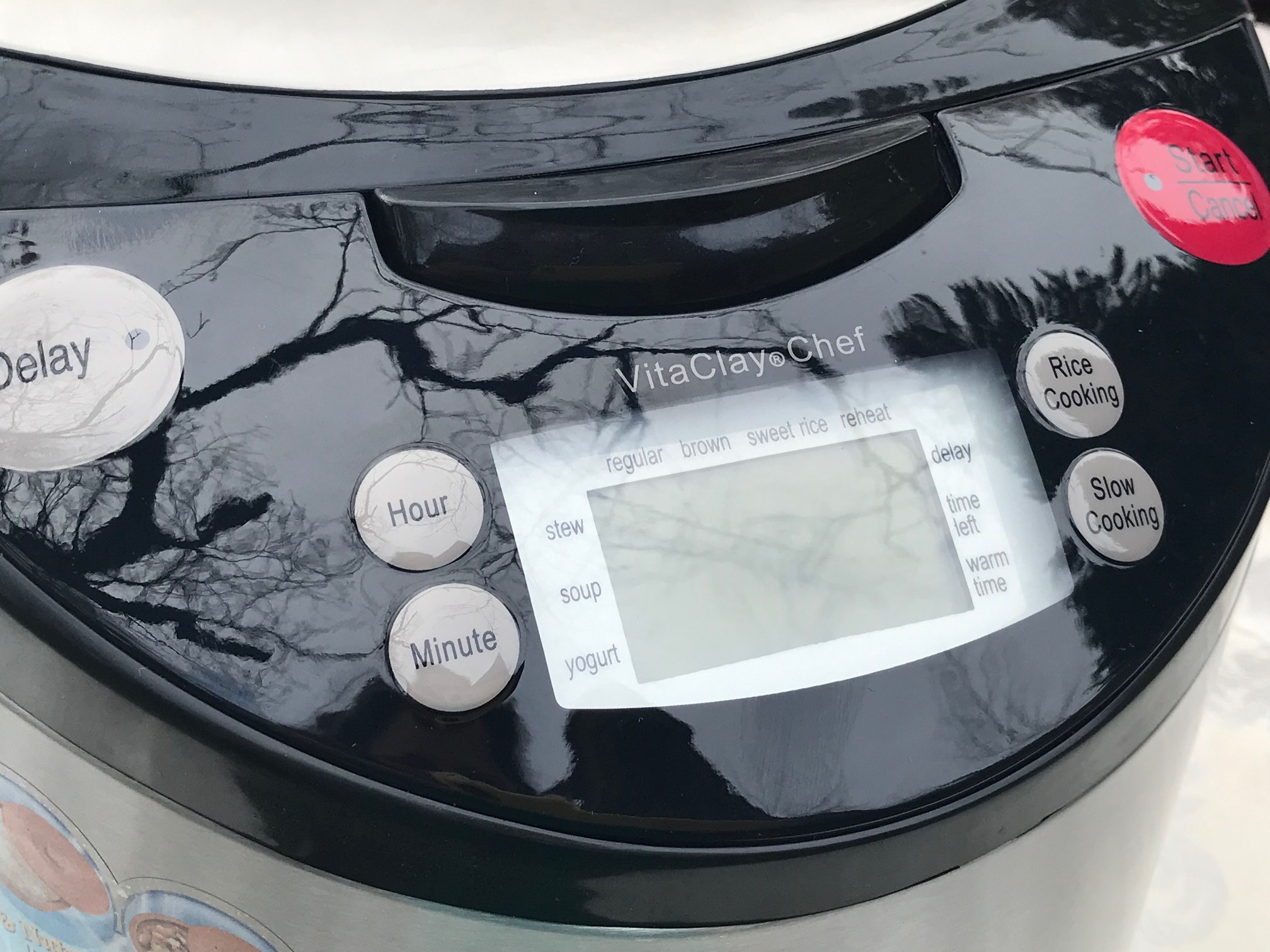
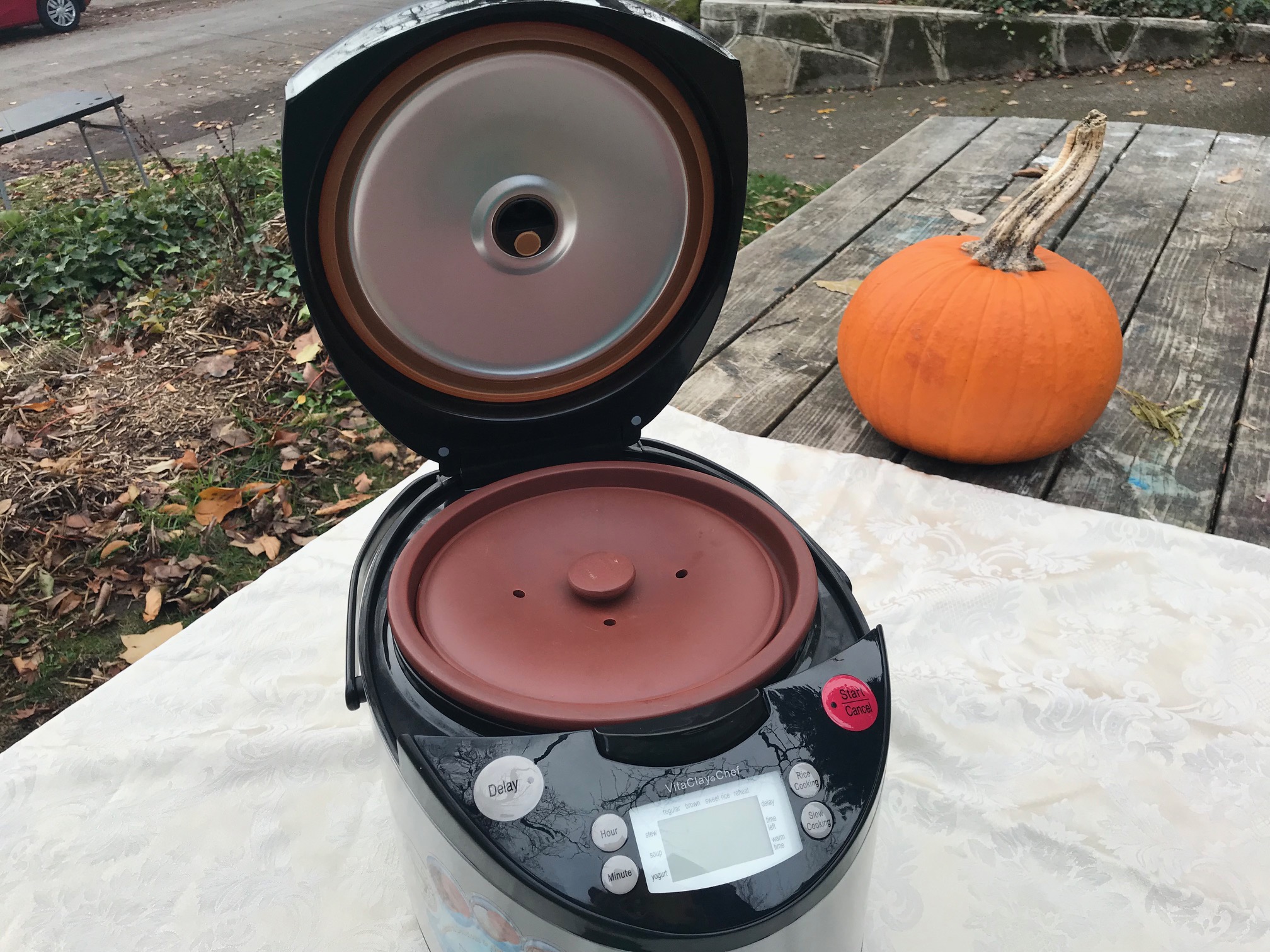
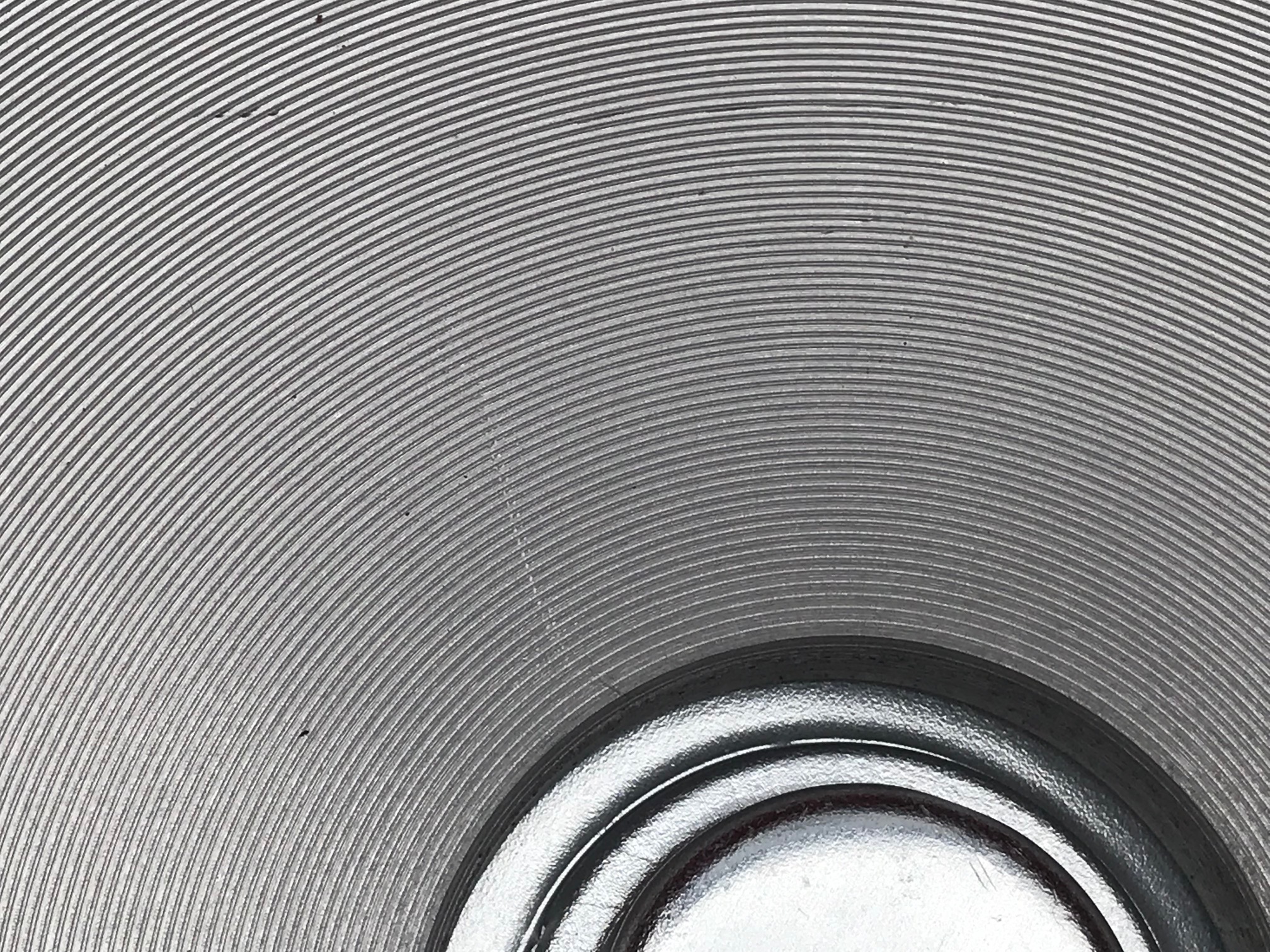
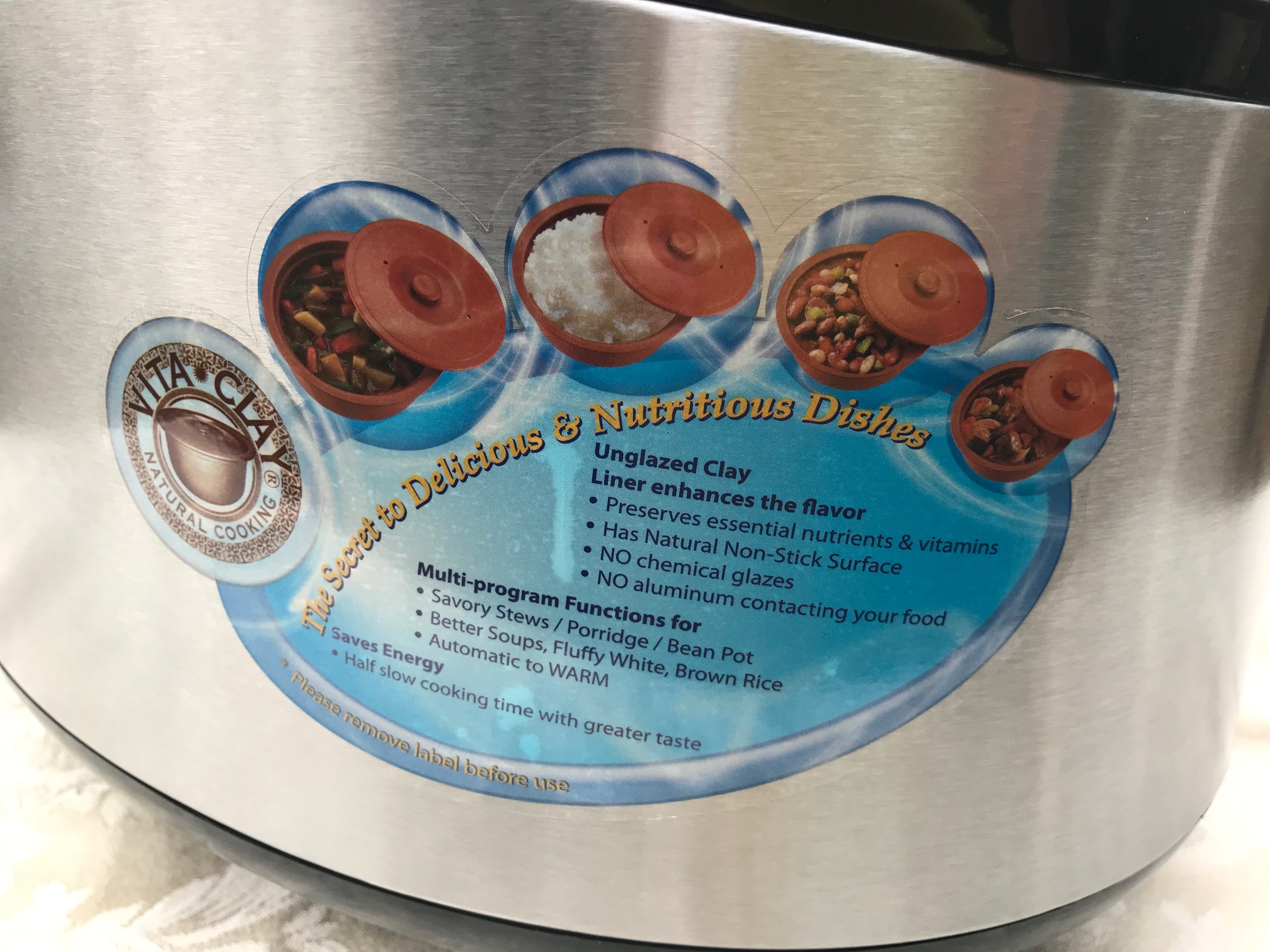
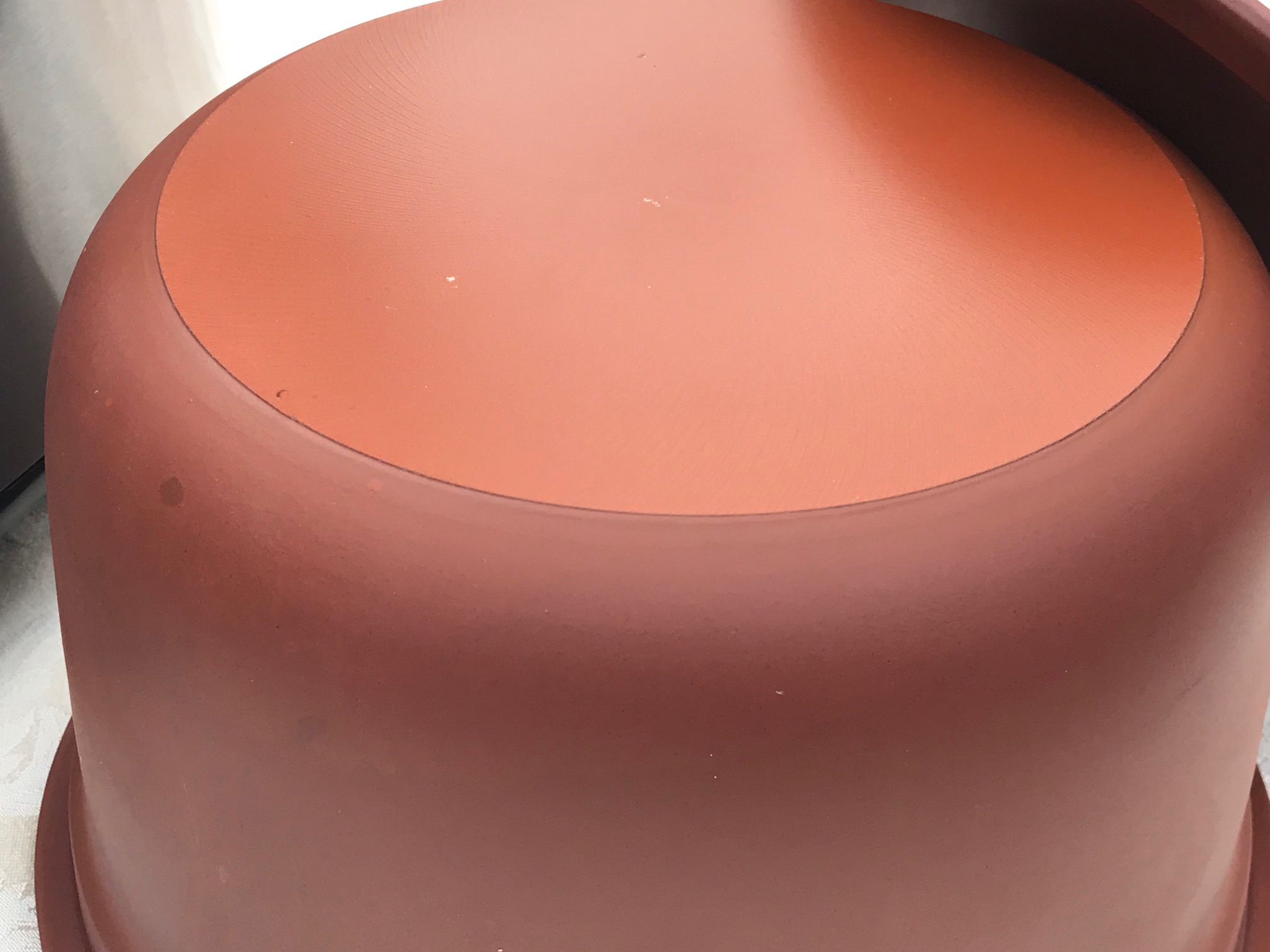
Never Miss an Important Article Again!
Join our Email List








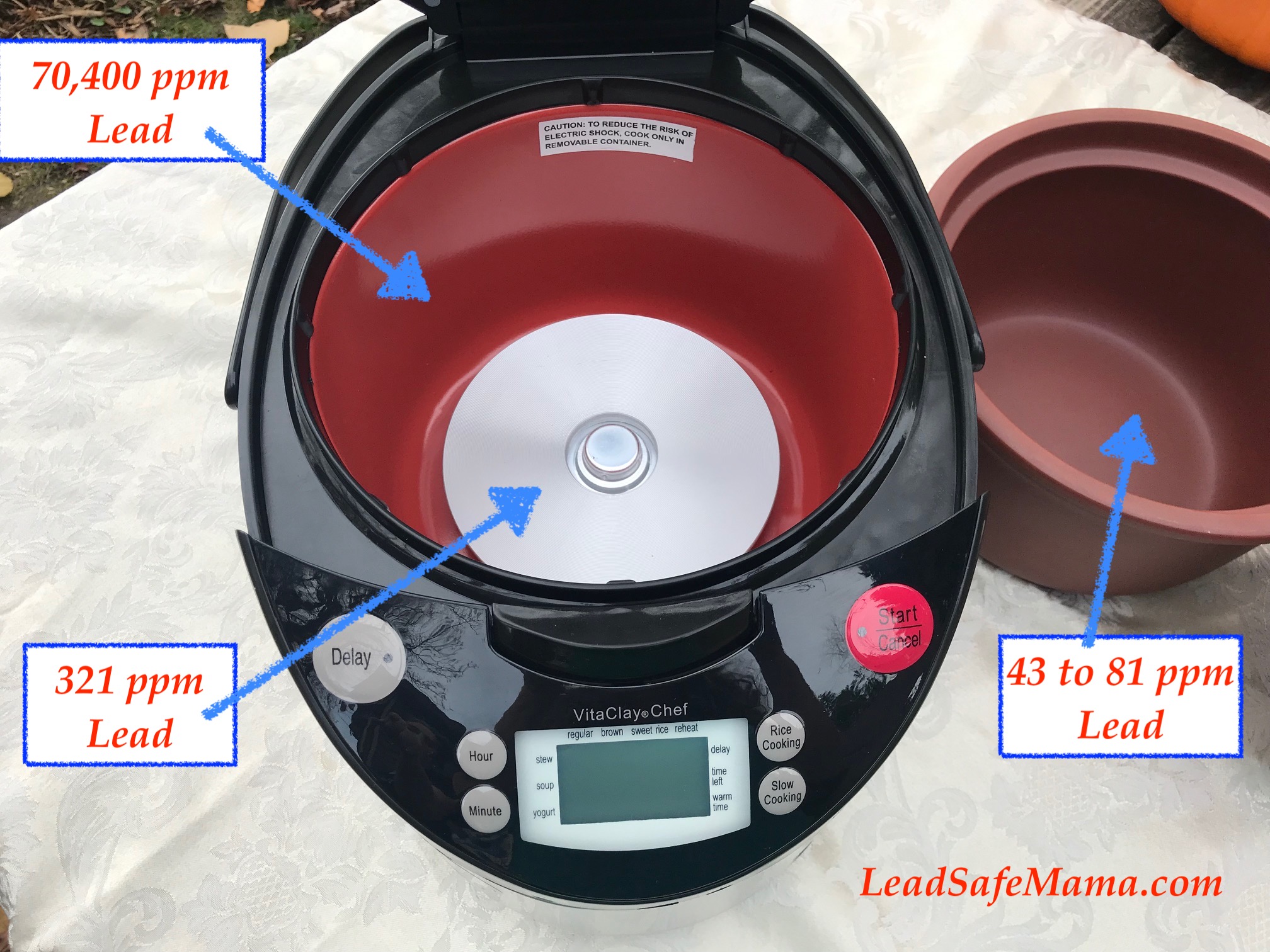
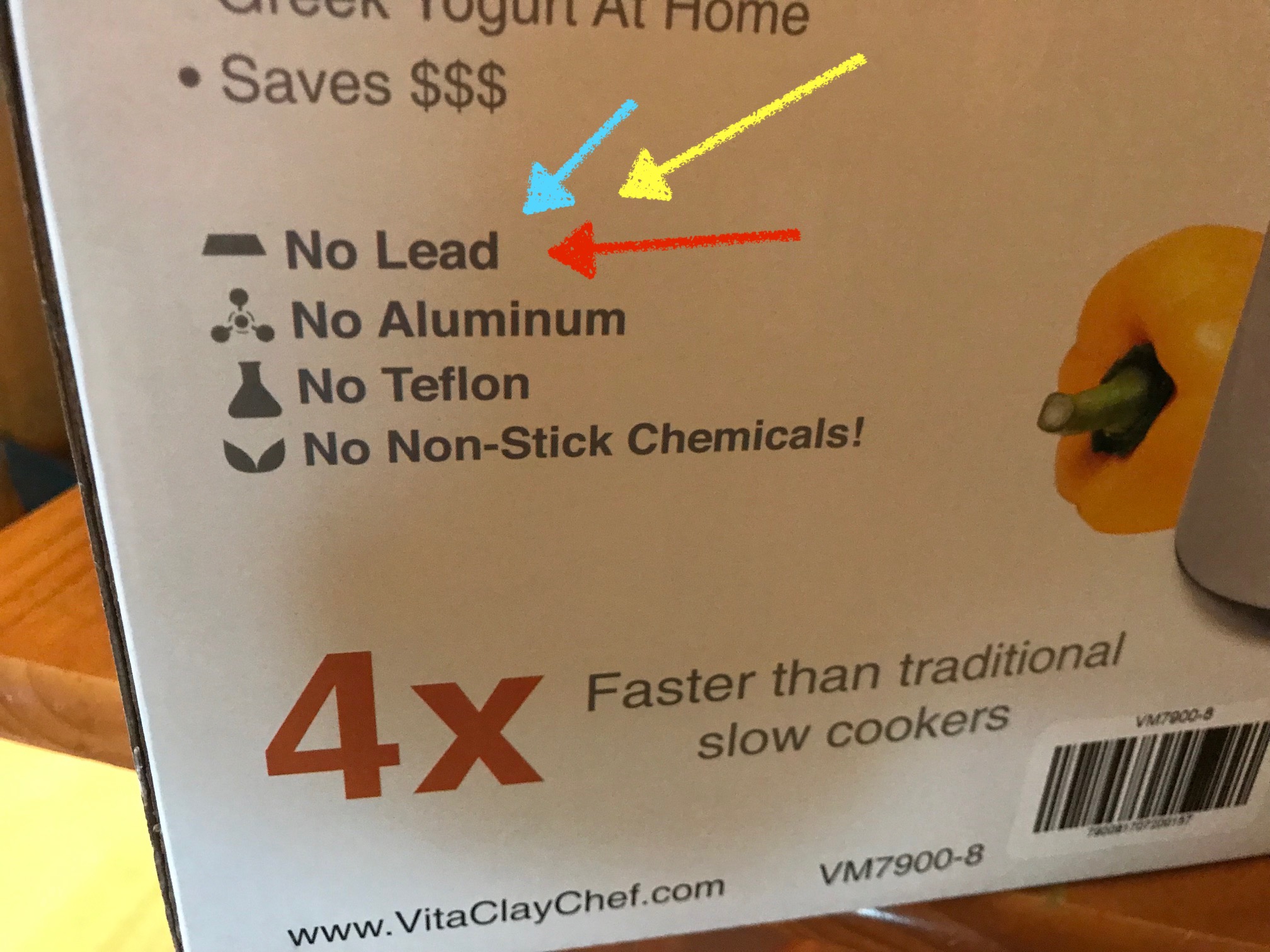

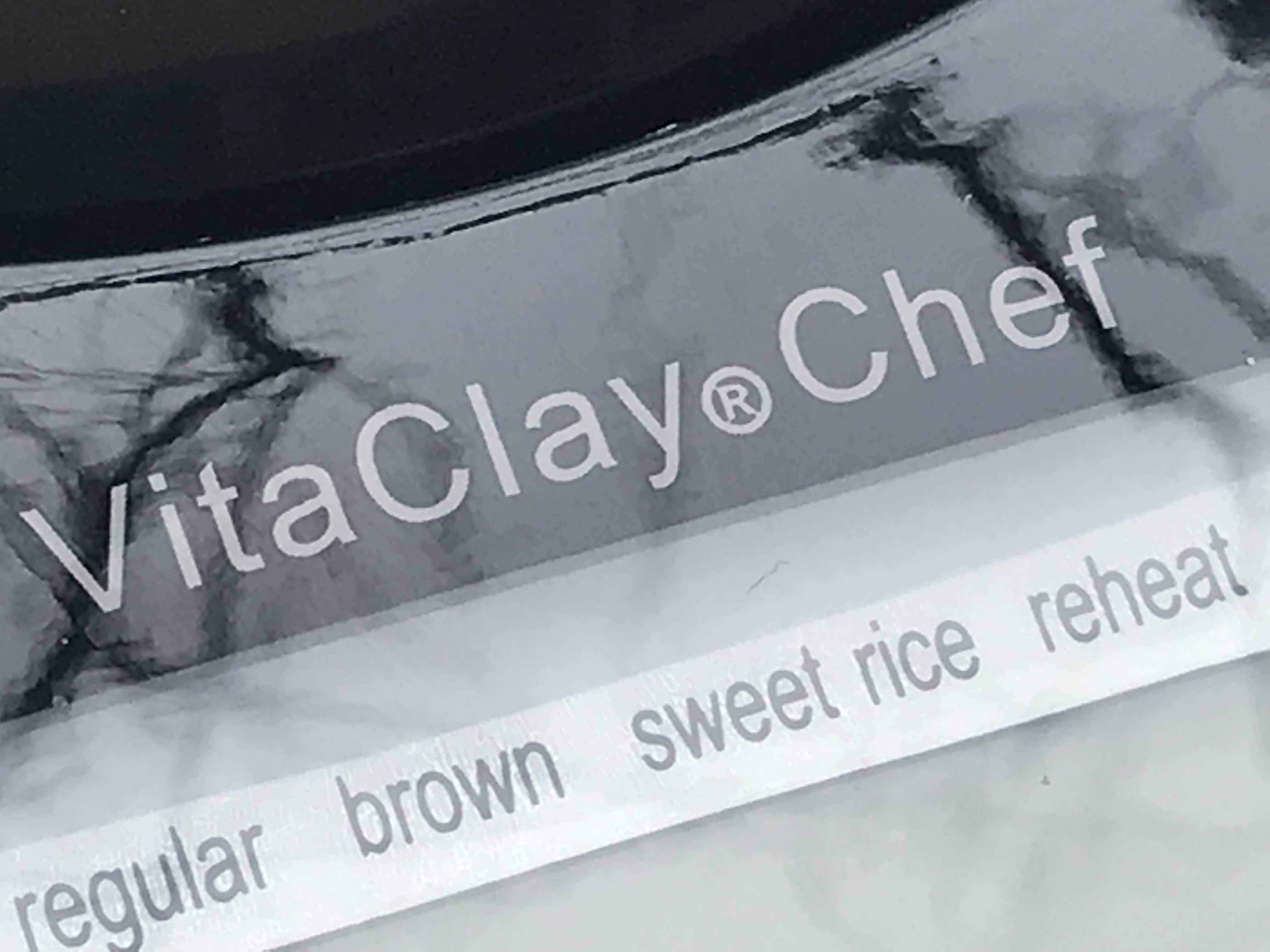
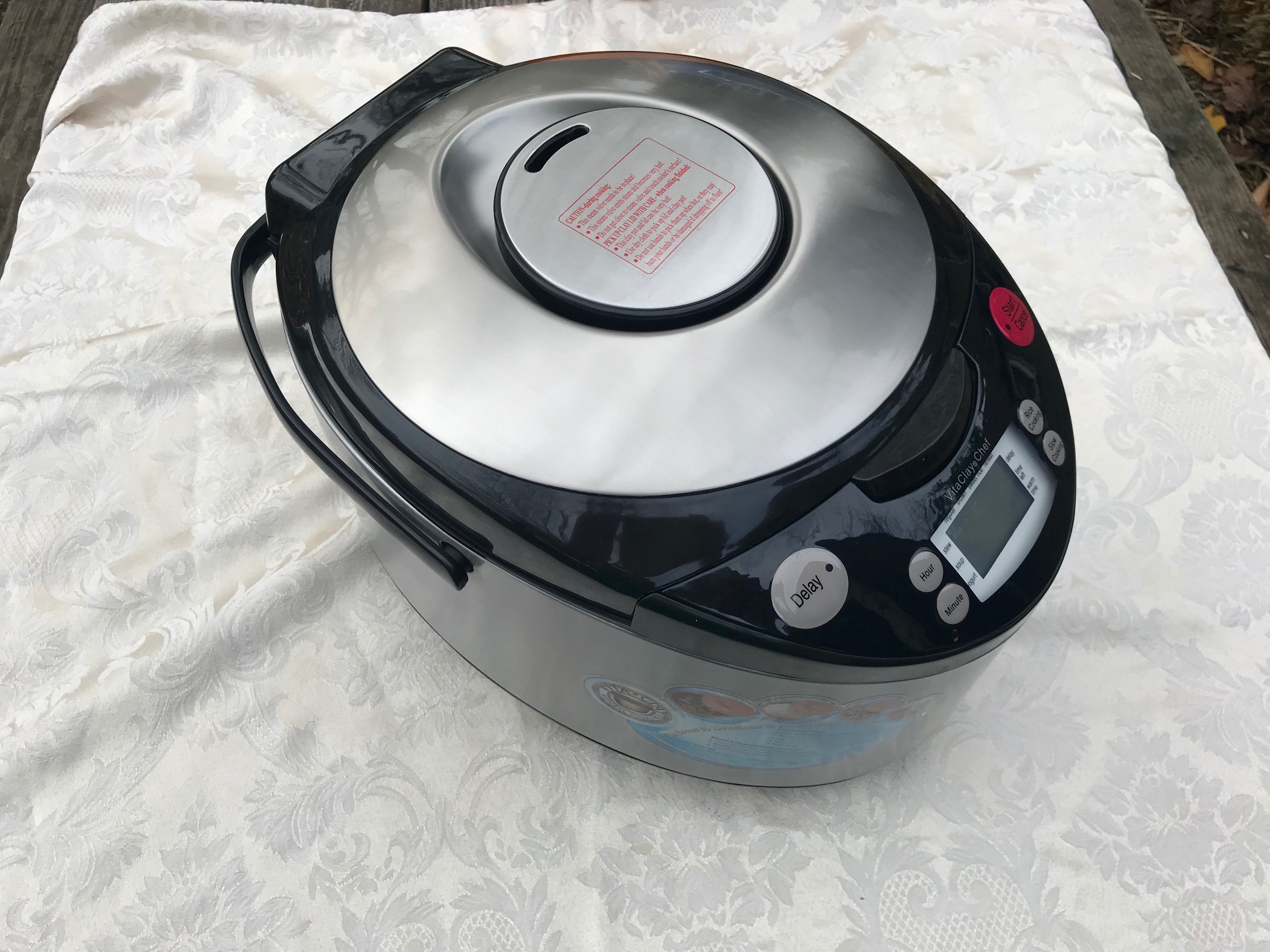
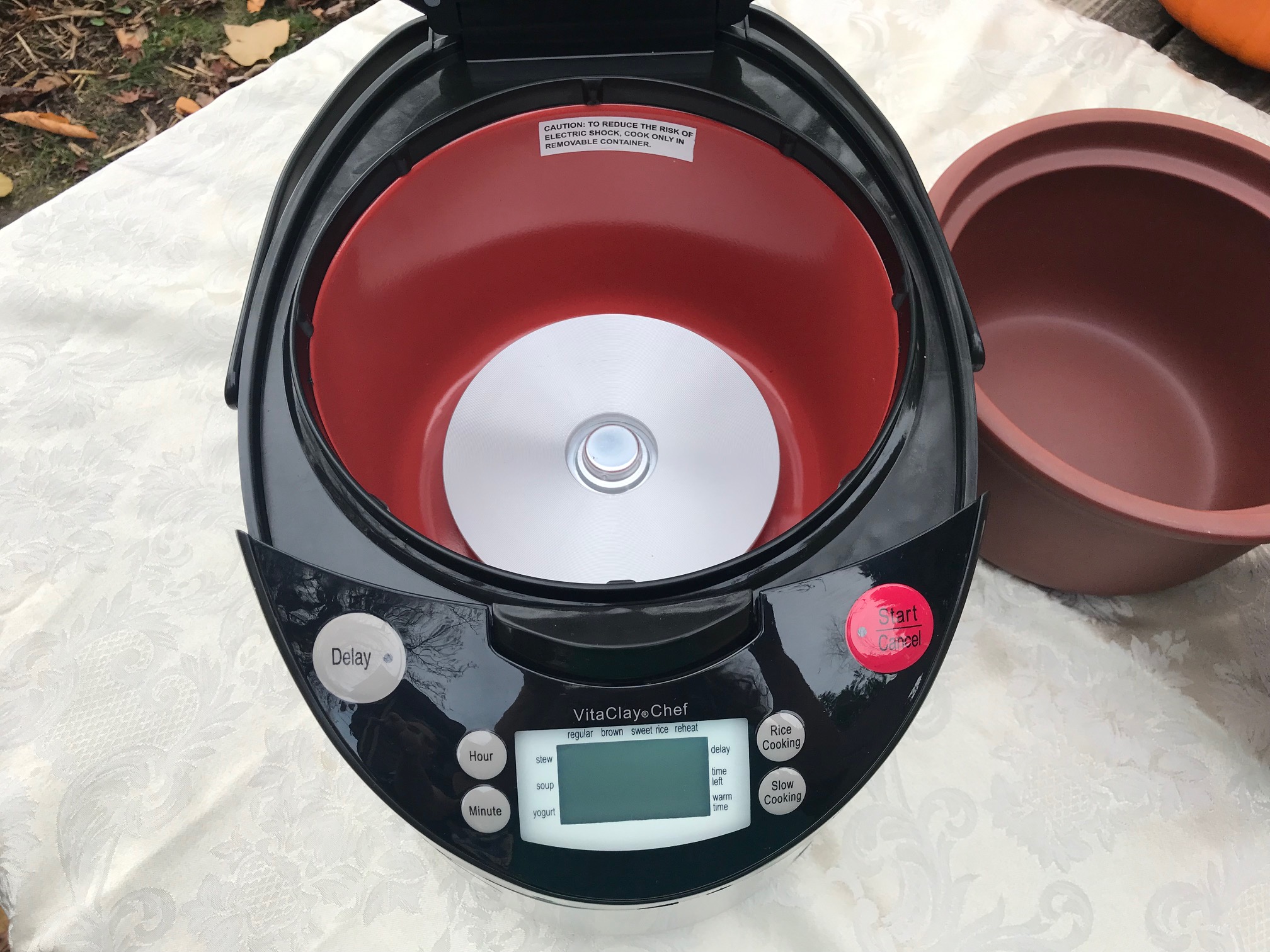
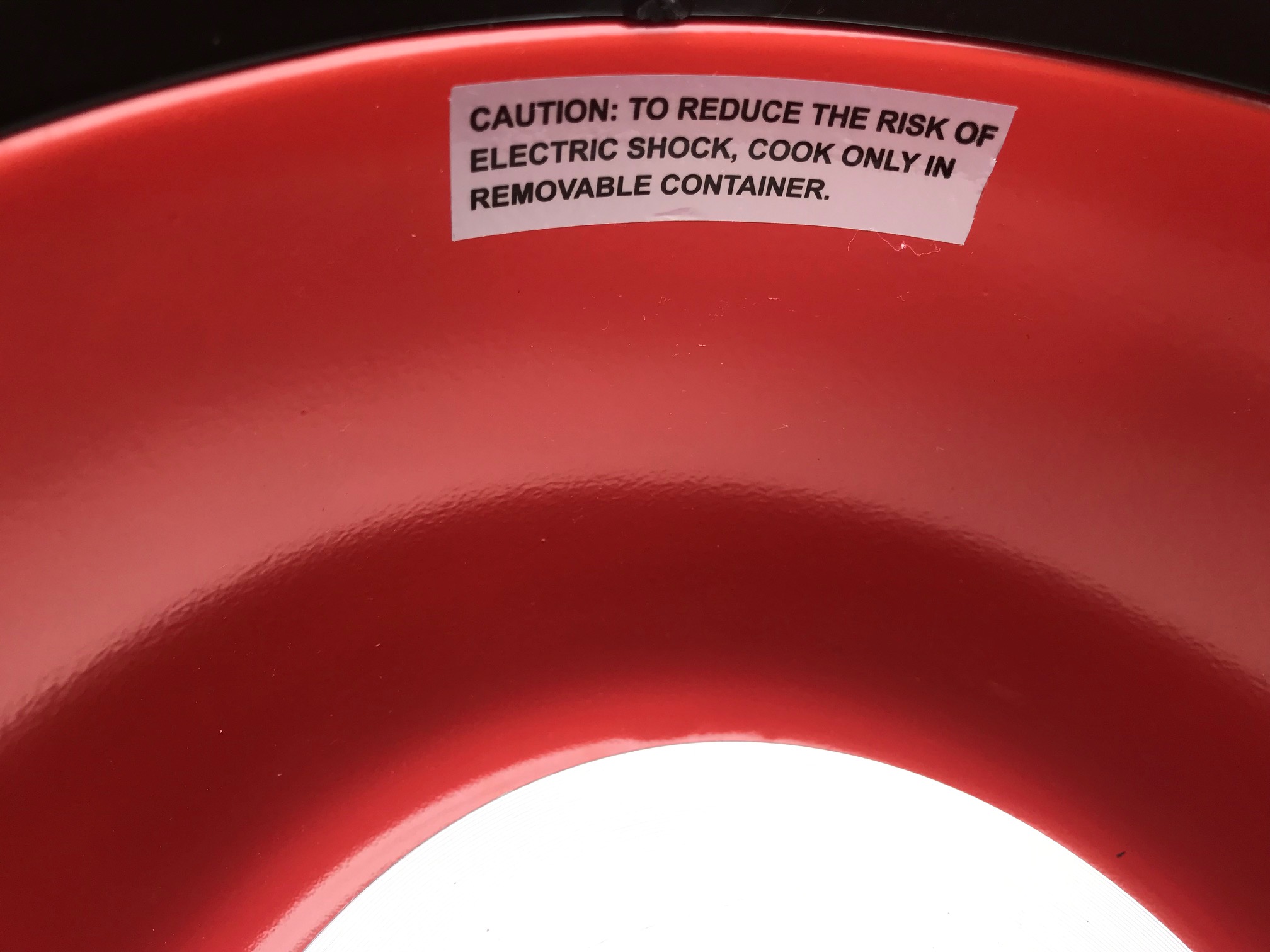
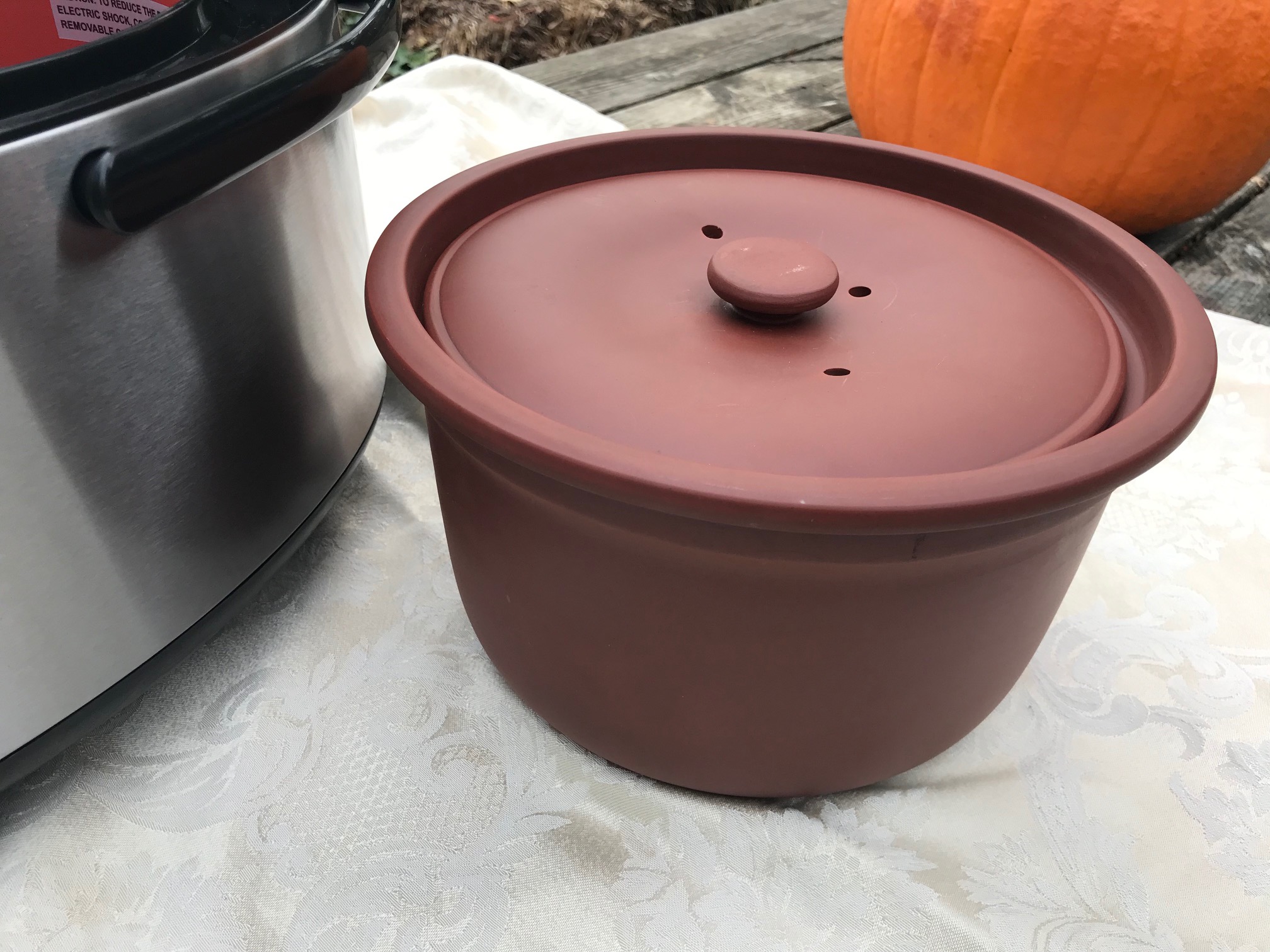
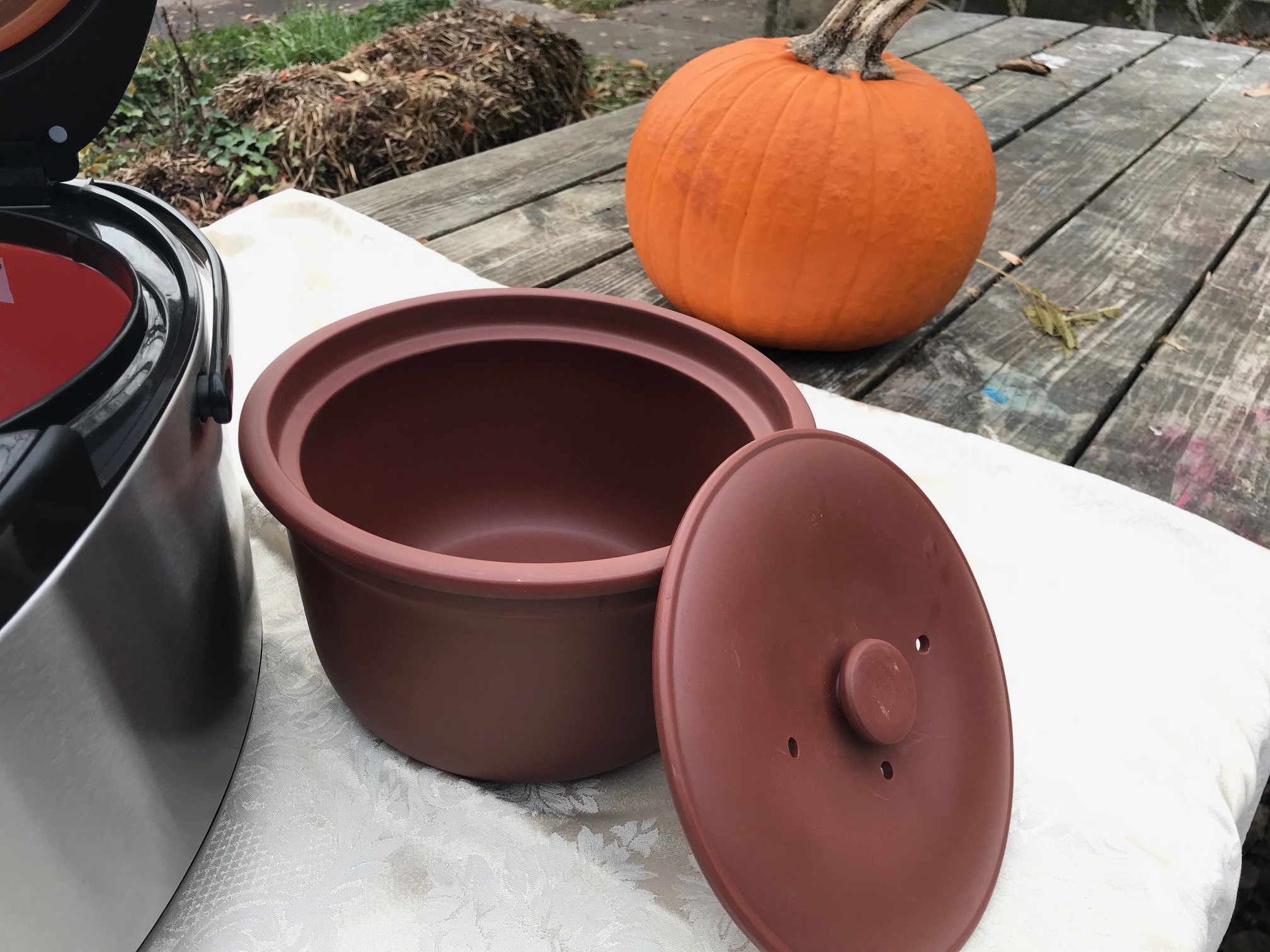
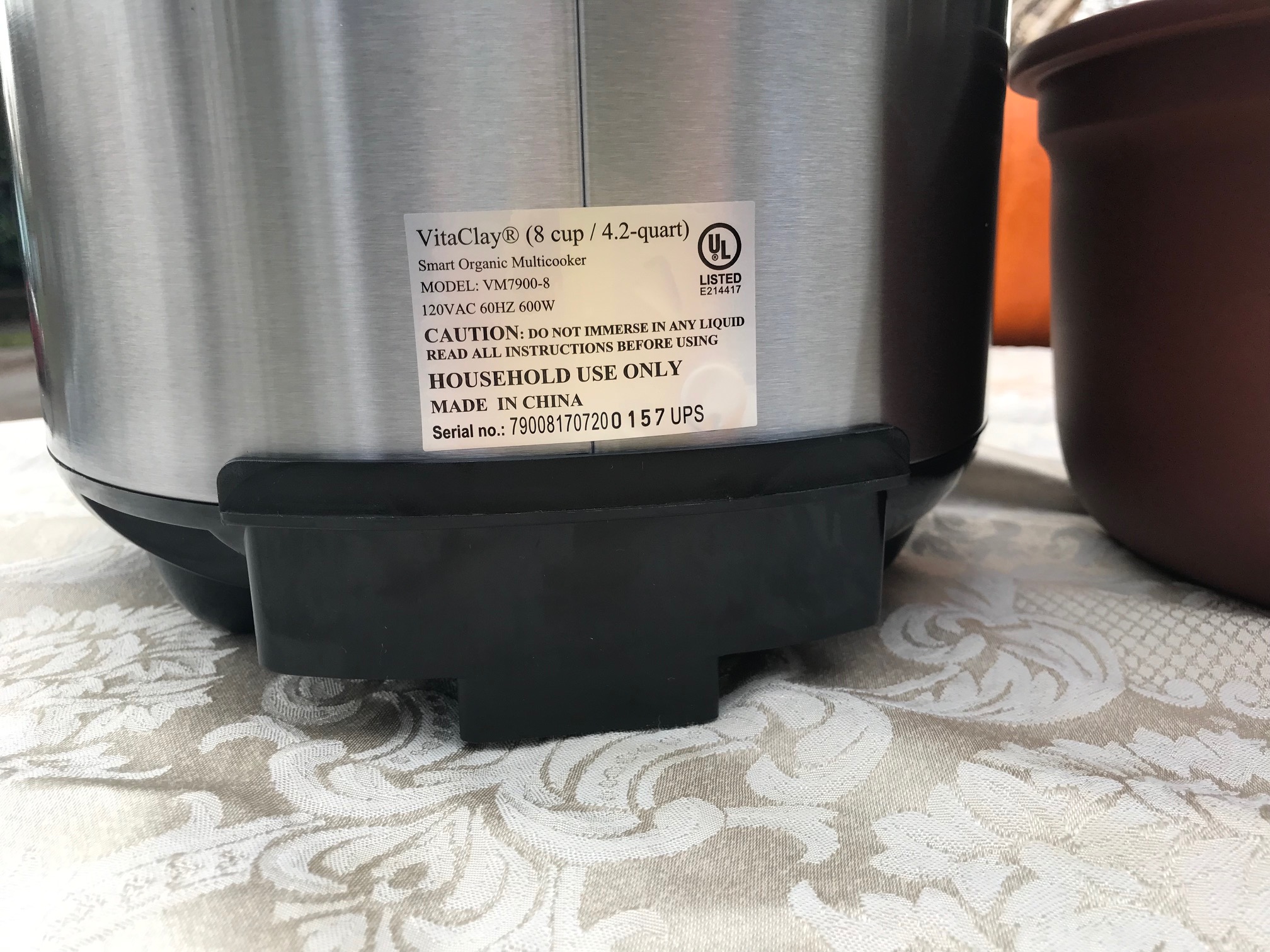

Tamara,
I’ve been using Vitaclay for the past two years, day in day out. And now I can’t help but wonder if the lead has transferred from the lining to the pot due to the interior heating process. What are your thoughts? I’d be glad to send the product to your testing lab to see if the lead content has changed.
We’re you able to have your pot tested?
Very, very interesting. Thank you so much for the blogpost.
What slowcooker do you use then? Which one do you deem as non toxic?
Hi Dennis, we don’t use slow cooker at all. Here’s another post about that: https://tamararubin.com/2019/06/asktamara-q-which-crock-pots-do-you-recommend-a-none-q-which-slow-cookers-are-lead-free/
Tamara
Oh I see. Total bummer. Gotta look what to use then. Just got into making bone broth and just sold a slowcooker with teflon. Then I noticed your website about lead. So many toxins to worry about, am I right? What the hell..
Anyway, gotta check for another solution then. We have induction and didn’t want to use it for 24 hours straight cooking the broths.
Hi Dennis – sorry to not have a better answer. We got an Instant Pot – which still has Lead but not on the food contact surface and is a “fast cooker” not a “slow cooker” but perhaps could be used like a slow cooker. I would personally like to see something like an Instant Pot with a clear glass non-toxic / Lead-free borosilicate glass pot as the interior liner… that would be excellent!
Here’s my post about the Instant Pot: https://tamararubin.com/2018/08/asktamara-does-your-instant-pot-have-lead-xrf-test-results-for-a-6-quart-instant-pot-purchased-in-july-2018-from-amazon/
Tamara
Hi Tamara,
Thanks for your post. I’ll be looking into it.
You seem to know a lot about this stuff. You ever thought about making your own and puttig it on the market?
Thank you for sharing this. I was considering the Vitaclay as a nontoxic option, but it looks like it’s not a good option after all. I’m curious if you’ve ever tested the Dutch Oven from Made In? It’s made in France and also claims to be lead, cadmium, aluminum free. Would love to see if you have ever tested one? Thank you!
Hi Tamara. I deeply appreciate your thorough investigation of the Vita Clay, as I’ve been using one for about a year and “thought” it was the safest out there. Interestingly, tonight there was an accident and the underside of the outer component melted…So I must throw it out. After reading your post, I may not replace it! But I do love how it works and would appreciate any recommendations on alternatives that work similarly. Feel free to email me personally. I use Dr. Mercola’s clay cookware for most things but use my Vita Clay for soups and grains. Have you ever tested Dr. Mercola’s cookware? If so, I’d be very interested in what you found. Thanks so much,
Cecilia
Hi Cecilia – unfortunately Dr. Mercola’s products had similar test results: https://tamararubin.com/2017/06/mercola_pan/
We use an Instant Pot – although it may not meet all of your needs depending on what you are looking for (and what your specific concerns are): https://tamararubin.com/2018/08/asktamara-does-your-instant-pot-have-lead-xrf-test-results-for-a-6-quart-instant-pot-purchased-in-july-2018-from-amazon/
This is one Lead free option I found: https://tamararubin.com/2019/02/rancho-gordo-tehuacan-clay-bean-pot-unglazed-from-puebla-mexico-lead-free/
Tamara
Hello again Tamara. I’m so grateful for the careful and trustworthy checking you do for all of us. I really appreciate it! Just a follow up that I did in fact replace my VitaClay cooker, and tested positive for lead myself for the first time in many years. I suspect that’s where it may have come from, because I gave up my Mercola dishes and bought one of those “everything” pans with a steamer and I like it…but it’s not deep enough for slow cooking soups and such. I’m still using my VitaClay, yet want to switch to something else. I will check out the options you shared previously and if you have any updates, please share. Thanks so much,
Cecilia
Hi Tamara,
With regards to your problem on how to slow-cook your soups and meals;
Until we moved and left our Vitaclay slowcooker in storage, I always relied on it for soups, stews and other slow cooked foods. Then I discovered that cooking over a low-flame in cast-iron dutch ovens and pots works just as good! It’s virtually just as easy and hassle free. The cast-iron retains heat very well and thus only needs a very low flame to cook your food thoroughly over long periods of time. No need to have extra electronic gadgets in your kitchen after all 😀 Try it!
Hi Cecilia, I couldn’t quite tell from the way the post was worded if you suspected your lead levels went up from the vitaclay or from the Mercola dishes. Could you please let me know which you meant. I’m very interested in this thread as I was considering purchasing a vitaclay. Thank you and I hope you got your levels back down!
Wow! And here I thought the vita clay was safe. I have recently been tested for heavy metals and I came up very high for Barium. The doctor thinks it’s in the air from chem trails, which it very well can be but after seeing the results of barium on here I wonder if it has leached into the food. Barium is extremely dangerous and I am currently trying to detox from the heavy metals.
Hi Tamara,
Thanks for all that you do.
I don’t think the interior of the Vita Clay component is scratching off. I have had one for a couple of years. I use it occasionally. But I am concerned about the fact the clay pot does come in contact with the heating element/plate. I hear clay tends to be porous. That’s my worry. Do you think there is a danger of the lead or aluminum getting inside the clay pot, then into the food? I also make yogurt with it. I really love it, I was disappointed to hear that some of the components contain lead.
Thanks,
Helen
I just purchased the rice cooker/yogurt maker – which is not the same as pictured here but all the same, it is still very concerning. Such a shame as it makes perfect rice. I was making the switch from instant pot (which I absolutely love) as I have read they are not ideal either. I’m so confused.
The Instant Pot does not have any lead in food-contact surfaces. The instant pot manufacturers also do not lie to their customers and state their product is Lead-free when it is not. Hands down the Instant Pot is a better choice. Here’s my blog post about that: https://tamararubin.com/2018/08/asktamara-does-your-instant-pot-have-lead-xrf-test-results-for-a-6-quart-instant-pot-purchased-in-july-2018-from-amazon/
Tamara
Thank you for your valuable information. I have been trying to find a crock pot made in the USA. I found one that had=s a stainless steel pot and a separate heating base. It is quite costly. But it may be worth it. I’ll check out your post about why you don’t use a slow cooker. Then try to make a decision. Thanks again!
I am sorry you seem to be pushing the instant pot too much! Why didn’t you say you wish Vitaclay would do what you wanted, instead of the instant pot? Everybody is in sales it seems. You can’t trust anybody at their word or online anymore.
If there is no lead in the pot you cook with you think that thick pot is going to allow leaching of outside components…I don’t know we would need proof of that.
Instant Pot has the lowest levels of lead and the lead is a non-food-contact surface. Instant Pot also does not claim to be Lead free. VitaClay claims to be Lead-free – and clearly is not. VitaClay also has Lead in a food-contact surface. Additionally the levels of Lead found in other components of the VitaClay appliance are extremely high. Instant pot responded responsibly and has worked to lower their Lead levels. VitaClay has done nothing.
T
This news about Vita-clay is absolutely shocking. I bought one years ago because I was looking for a slow-cooker that did not have harmful non-stick chemicals in the pot. Vitaclay also marketed the benefit of its ‘porous’ clay surface which is supposed to enhance the flavor as the food cooks.
I am really saddened by this revelation because I really believe in Vitaclays healthy living moto. I hope that Vitaclay can change this lead contamination problem in the future if they take these results seriously and with proper remorse and transparency. (The recipes on their website are wonderful and really healthy! I receive their marketing emails just to get their healthy recipe suggestions.)
Have you tested Miriam’s Earthen Cookware? This came up in my search for a VitaClay alternative. Miriam’s website mentions this:
“Pioneering, Non-Toxic: World’s first & only cookware/bakeware made from 100% Primary clay [uncontaminated clay from deep within]. Tested & Certified to have NO Lead, NO Cadmium, NO Arsenic, or heavy metals, No Chemicals or glazes used. Fully handcrafted in USA.”
I would also like to see test results on this!